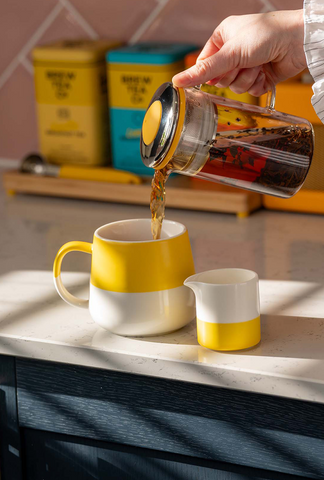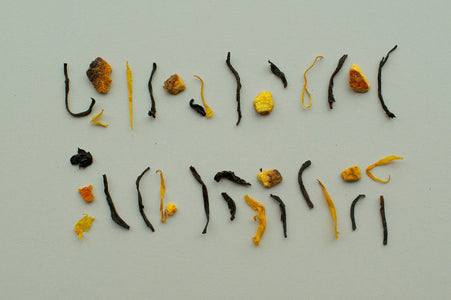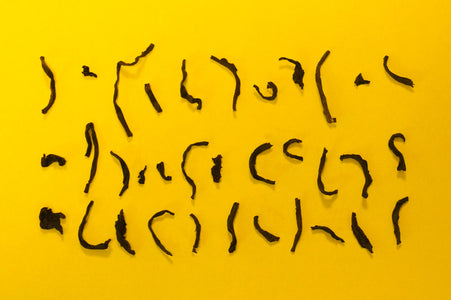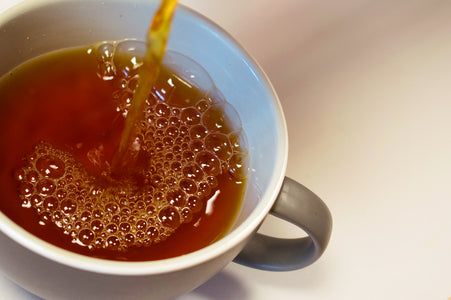There are two ways to decaffeinate tea: you can either strip the caffeine from the tea using the solvent Ethel Acetate {which is also remarkably good as a paint hardener} or you can combine the tea with CO2 in a high-pressure environment to transfer the caffeine from the tea to the CO2. And we promise that’s as technical as we’re going to get.
BUT WHICH IS BEST?

Some people say that it’s better to use the CO2 process over the Ethel Acetate because CO2 is more natural. The truth is, both CO2 and Ethel Acetate are both naturally occurring - it’s just that the latter is a naturally occurring mild toxin.
You might have guessed then, that we use the CO2 process to decaffeinate our tea. As well as avoiding serving up toxic waste, we reckon using this process means that we get a much better flavour out of the finished tea.
Using paint hardener {AKA Ethel Acetate} to decaffeinate tea is, unsurprisingly, a pretty harsh way of doing things. As well as getting rid of the caffeine, you’re banishing most of the flavour compounds from the leaf and leaving yourself with a tea that’s drab and uninspiring enough to call “Decaf”.
By sticking with a gentler process and using a super flavoursome, whole leaf Ceylon, we’ve created CO2 Decaffeinated, a decaffeinated black tea which is light, earthy and a little bit plummy*.
No abbreviations needed.
BUY CRACKING CO2 DECAFFEINATED HERE.
*It also tastes smashing with some salted caramel popcorn.





